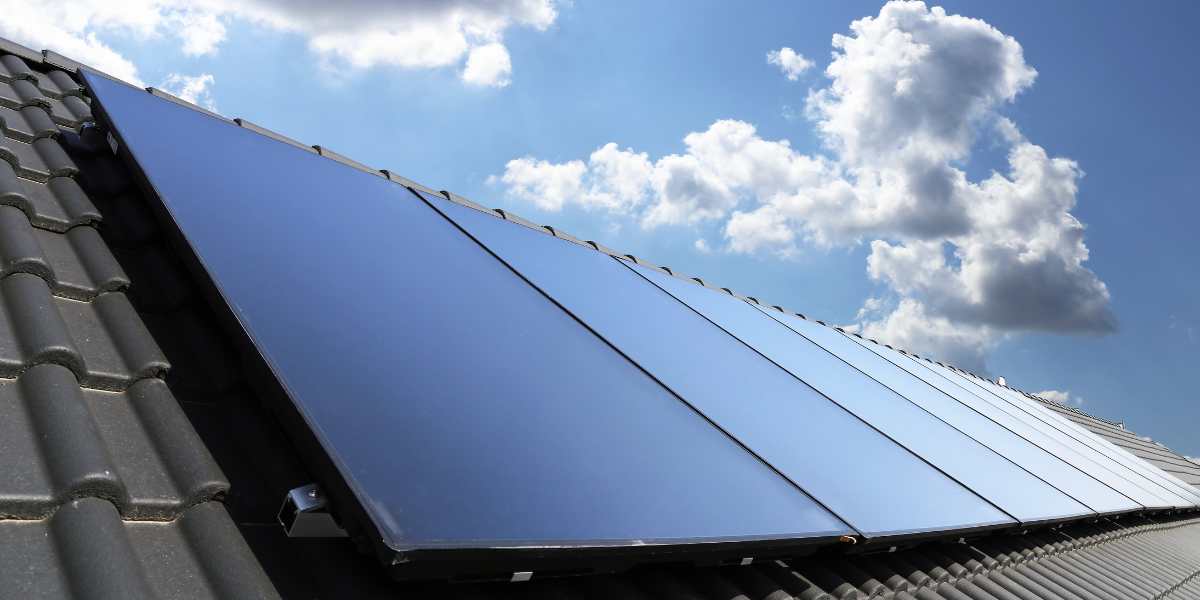
> Read more about the subsidies that are available for buying solar panels
The various types of solar panels
The different types of solar panels are mainly determined by the material the solar cells are made of. There are currently 5 types of solar panels for sale on the Dutch market*. These are monocrystalline, polycrystalline, amorphous and glass-glass panels. As mentioned, there are currently 5 different types of solar panels on the market in the Netherlands. The most common panels are made of silicon.
Most commonly used solar panels
The most commonly used solar panels for houses are monocrystalline and polycrystalline solar panels. Amorphous silicon, also known as thin film, solar panels are also available. The newest kind is the glass-glass solar panel. As the name suggests, this panel lies between two layers of glass.
Monocrystalline solar panel
The solar cells in a monocrystalline solar panel consist of a single crystal. The surface of monocrystalline solar cells has ordered electrodes and is uniformly black/dark blue. These solar panels have the highest efficiency. Monocrystalline solar panels have several per cent more yield than polycrystalline ones. However, the panels are more expensive but have a higher efficiency per m2. In short, the best choice for homeowners who want to get the maximum yield from a small roof.
Polycrystalline solar panel
In a polycrystalline solar panel, there are solar cells consisting of several coarse crystals. A polycrystalline solar cell shows a kind of broken shard pattern. Polycrystalline solar panels are favourably priced and offer reasonably high efficiency. They have slightly lower efficiency than monocrystalline solar panels. When space on the roof is not a factor, the polycrystalline solar panel type is the best choice because it will be a lot cheaper to buy compared to the monocrystalline variant.
Amorphous solar panel
Amorphous silicon is used in the thin-film solar panel. Amorphous solar panels contain no crystals, this is why they are very flexible. Amorphous solar panels give the least efficiency of the four. The price is much lower, but these solar cells are less suitable for use in rooftop solar panels. Thin-film panels are mainly used on vehicles and vessels such as buses, sailing boats and yachts.
Glass-glass solar panels
Glass-glass solar panels are new and have a longer lifespan than all other types of panels. In addition, this type degrades less quickly, so you can enjoy higher yields for longer during the life of the panels. Glass-glass solar panelsIt is common knowledge that solar panels degrade during their life cycle. Manufacturers can guarantee 90% of capacity after 10 years and 80% after 20 years (ordinary solar panels).
However, with glass-glass solar panels, the decline in generating capacity is not so significant and so you will have been able to generate more kWh after 25 years. But you do have to pay more for these panels, partly because this technology is still fairly new (relatively little supply). You can therefore compensate the higher purchase price with higher yields and, in the long run, make a profit.
Bifacial solar panels
Bifacial panels have solar cells on both sides of the panel, so they can also capture sunlight from reflective surfaces. This can increase their overall energy output, especially if they are installed on a reflective surface, such as white roofing.
Each type of solar panel has its advantages and disadvantages, and the choice depends on factors such as available space, budget, aesthetics and performance requirements. It is advisable to seek professional advice from a solar panel installer to determine the best type of solar panels for your specific situation.
> Read more about the return on investment with solar panels
